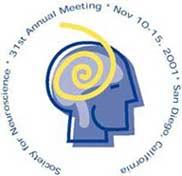[ ONLINE INTERVIEW ]

to unlock Alzheimer's mystery
ESSENTIAL ROLE FOR CHOLESTEROL
IN SYNAPTIC PLASTICITY AND NEURONAL DEGENERATION
LAY SUMMARY ARTICLE FOR SIENTIFIC SESSION No.752.5
Natalia V. Koudinova & Alexei R. Koudinov
For continuous coverage, questions and to locate our related recent key FASEB J and Neurosci Lett articles please see: http://anzwers.org/free/neurology/
We can’t say that cholesterol is a “bad” molecule. This is because while human brain has only 2 % of the whole body mass, it contains a quarter of the cholesterol present in the whole individual.
This molecule is studied well and is blamed a lot in relation to atherosclerosis and heart disease. However, the role for cholesterol and phospholipids (two major lipid components of the membranes of any living cell and of neurons, where nervous system activity is generated and propagated) in memory formation is understudied. Thus, of thousands of papers devoted to “cholesterol”, there were no single study that would cover the subject of “cholesterol and synaptic plasticity”, according to the search for scientific papers that have word “cholesterol” or “cholesterol and synaptic and plasticity” in their titles or abstracts [ see search results at our Internet Office page ] and published from January 1965 to August 2001 in the journals of HighWire Press (an Internet imprint of the Stanford University Libraries) that assists many respected publishers in the online publication of their journals.
But what is “synaptic plasticity”? In the brain, when the information (coded as a nerve impulse) is transmitted from one neuron to another, the first neuron output nerve ending (called axon) releases special vesicles containing chemicals called neurotransmitters. The neurotransmitter molecules then bind to receptors on the surface of the input processes of the neuron-receiver. After the transient interaction with a receptor on the neuron-receiver, neurostransmitter molecules normally return back to the output nerve ending (from where they were released) in order to be ready for the next act of information neurotransmission. This transient receptor interaction with neurotransmitters, occurring at the minute gap between neurons, called synapse, launches a number of chemical changes inside the neuron-receiver, which is called postsynaptic cell in contrast to the releasing neurotransmitter presynaptic cell. These changes are the basis for the nerve signal processing, synaptic amplification (also called synaptic plasticity), and for the formation of memory.
In our study we first attempted to elucidate the role of cholesterol in neurotransmission and synaptic plasticity. To this end we prepared slices from the lab rat hippocampus, a part of the brain essential for learning and memory storage and having a lot of another receptor molecules (different from synaptic receptors) handling neuronal uptake of lipid-protein complexes (called lipoproteins) carrying cholesterol. Very thin slices (less than half a millimeter) of the hippocampus, retaining the hippocampal integrity and complex neuronal network architecture, were maintained live in vitro.
Then we set out to experimentally model neuronal cholesterol disbalance by acute increase of cholesterol turnover and inability of the hippocampus to redistribute cholesterol from one cell to another via lipoprotein transport. To achieve this outcome the slices were subjected to biochemical increase of cholesterol removal. Simultaneously or immediately thereafter we evoked and recorded two different brain waveforms: so called paired pulse facilitation (PPF) or long term potentiation (LTP), indicative of neurotransmission or synaptic plasticity, respectively.
We found that cholesterol disbalance (particularly, the lack of cholesterol supply of neurons via lipoprotein transport) impaired both PPF and LTP and thus caused the failure of the neurotransmission and synaptic plasticity.
In addition to tracing neural waves we analyzed slices by immunofluorescence. We found that cholesterol disbalance causes neurodegeneration of hippocampal neuronal processes, and the appearance of TAU protein pathology in hippocampal axon fibers (also called mossy fibers). TAU protein pathology is one of the key features of Alzheimer’s disease, characterized by the formation inside neurons the twisted strands of fiber, called neurofibrillary tangles, composed of pathologically modified TAU protein.
In a separate set of experiments we traced lipid synthesis in the hippocampal slices with radioactive acetate, an inorganic precursor molecule incorporated into all cellular lipids.
We first labeled slices with radioactive acetate following the LTP induction. After the labeling, slices were placed on slides, dried and exposed to the film. Such simple protocol showed an increase in label incorporation in that area of the slices, where LTP waves were evoked, indicating importance of lipid synthesis for synaptic plasticity. Secondly, we labeled slices with radioactive acetate in the presence of amyloid beta protein, a normal human protein pathologic buildup which in Alzheimer’s brain is believed to be another disease key feature. After labeling, the lipids were extracted from the slices, separated by a special technique and quantitated by radioactivity counting.
This methodology allowed us to trace amyloid beta-mediated higher rate of cholesterol and phospholipid synthesis in the hippocampus. We concluded that an increase of cholesterol synthesis serves the augmented need for cholesterol during synaptic plasticity, and that amyloid beta could regulate this physiologic brain wave-dependent process. We analyzed many hippocampal slices to ensure the statistical validity of the results.
Present report is an extension of our decade-long study of the relationship between amyloid beta protein and lipid metabolism. This background research was successfully summarized in several scientific papers, got recognition by Science magazine and led us to the present study on the role of cholesterol in synaptic plasticity and neuronal degeneration.
Present study yielded the scientific paper published in June 2001 in the leading American experimental biology journal, called FASEB Journal.
The results imply that the change in TAU and amyloid beta protein neurochemistry in Alzheimer’s disease may independently help to recover synaptic function and plasticity, impaired by neuronal cholesterol turnover misregulation.
Still, many questions remain and have to be systematically and thoroughly investigated. There will be no simple answers. The clear issue is that cholesterol is an indispensable molecule for intelligence that makes us humans, and for human neurological diseases.
***********
For further details please see our teaching neuroscience sessions (also presented in the meeting press book) entitled “Neuronal cholesterol pathology is the cause of Alzheimer's disease” (session #23.3) and “Brain cholesterol and neuronal function” (session #23.4) (available at poster boards BBB-72 and BBB-73 throughout the meeting both AM and PM). .
Also please note that full text of this teaching session is also available as
Text copyright © 2001 by Alexei Koudinov and Natalia Koudinova
To cite this article use:
N.V. Koudinova & A.R. Koudinov. (2001) Essential
Role for Cholesterol in Synaptic Plasticity and Neuronal Degeneration.
31st Soc Neurosci Meeting Press book
![]()
![]()


![]()
Call Inter cell:
(972 55) 26-4823
or place:
[ ONLINE INTERVIEW ]
Full text article
of our most recent key publication become available on
November 27, 2001.
***********
Thank you for sharing with us our scientific excitement
